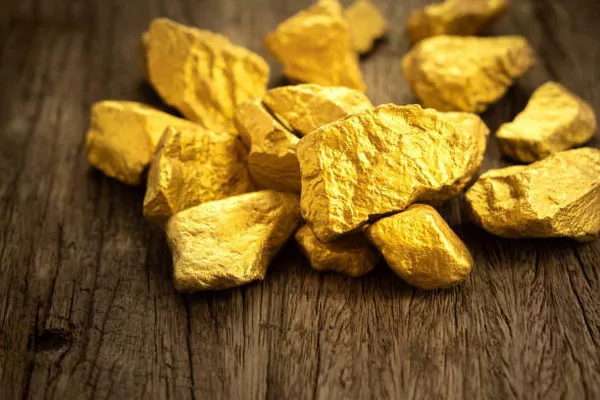Sterling silver is a highly sought-after metal known for its beauty and value. Whether you’re a seasoned collector, a jewelry enthusiast, or simply someone with a piece of silver you’re unsure about, it’s important to know how to identify genuine sterling silver. This guide will walk you through various methods to help you confirm the authenticity of sterling silver.
Understanding Sterling Silver
Sterling silver is an alloy composed of 92.5% pure silver and 7.5% other metals, typically copper. This mixture provides the metal with durability and strength while maintaining its desirable aesthetic qualities. Pure silver, while beautiful, is too soft for most practical uses, which is why alloying with a more robust metal like copper is necessary.
Markings and Hallmarks
One of the most straightforward methods for identifying sterling silver is to look for specific markings or hallmarks. Here’s what to look for:
Sterling Mark: Authentic sterling silver items are usually stamped with “STERLING,” “925,” or “STER” to indicate that they contain 92.5% silver. This mark is often found on the underside of jewelry, on the edge of silverware, or on the back of silver coins.
Maker’s Marks: In addition to the purity mark, many silver items also bear the mark of the manufacturer or designer. These marks can provide additional clues about the item’s authenticity.
Country of Origin: In some cases, silver items may also be stamped with the country of origin. For example, British sterling silver often bears a hallmark system including a lion passant, which is the mark for sterling silver.
Visual Inspection
Sometimes, markings can be worn away or hidden. In these cases, a visual inspection can be helpful:
Color: Genuine sterling silver has a bright, shiny appearance with a slightly warm hue. It should not have a yellowish or dull color. Keep in mind that tarnishing can occur, which might make silver look less shiny, but proper cleaning can restore its luster.
Tarnish: Silver tarnish appears as a black or darkened layer on the surface of the metal. While tarnishing can occur on sterling silver, the presence of tarnish alone is not a definitive indicator of authenticity. Tarnish is more commonly an indication that the silver needs cleaning.
Magnetic Test
Sterling silver is not magnetic, so a simple magnetic test can help rule out the possibility of a silver-plated item or other metal alloys. To perform this test:
Obtain a Magnet: Use a small, strong magnet.
Test the Silver Item: Bring the magnet close to the silver item. If the item is attracted to the magnet, it’s likely not sterling silver. However, if there is no attraction, it does not guarantee authenticity—other non-magnetic metals could be used as well.
Acid Test
The acid test is a more definitive method for identifying sterling silver but should be used with caution as it involves chemicals:
Purchase an Acid Testing Kit: These kits are available from jewelry supply stores or online. They typically include different acid solutions for testing various types of silver.
Perform the Test: Follow the instructions included with the kit. Typically, you’ll need to apply a small drop of acid to a scratch mark made on the silver item. Sterling silver will react to the acid by turning a specific color (usually a bright green).
Interpret Results: The color change will help determine the purity of the silver. Be sure to follow the kit’s instructions carefully and handle acids with care.
Professional Appraisal
If you’re still unsure about the authenticity of your silver item, seeking a professional appraisal might be the best option. Appraisers use advanced techniques and have extensive knowledge to accurately identify sterling silver. They can also provide information on the item’s value and history.
Additional Tips
Compare Prices: Genuine sterling silver items are often more expensive than silver-plated items. If a piece seems too good to be true in terms of price, it might not be sterling silver.
Check the Weight: Sterling silver is denser than many other metals. If a piece feels unusually light for its size, it might be silver-plated or made from a different material.
Consult Experts: If you have access to a jeweler or silver specialist, their expertise can provide additional assurance about the authenticity of your item.
See Also What Happens to Gold Stocks in a Recession
Care and Maintenance
Proper care can help preserve the appearance and value of sterling silver:
Regular Cleaning: Clean sterling silver regularly to prevent tarnishing. Use a silver polish cloth or a mild silver cleaner. Avoid using abrasive materials that can scratch the surface.
Proper Storage: Store silver items in a cool, dry place. Keeping them in anti-tarnish pouches or cloths can help prevent tarnishing.
Avoid Exposure: Minimize exposure to harsh chemicals, including chlorine and sulfur, which can accelerate tarnishing.
Conclusion
Identifying sterling silver involves a combination of inspection methods, including checking for markings, visual inspection, magnetic tests, and acid tests. Professional appraisals can offer additional confirmation. By understanding these techniques and maintaining proper care, you can ensure that your sterling silver items retain their beauty and value over time. Whether you’re assessing a family heirloom or shopping for new pieces, knowing how to identify genuine sterling silver will enhance your confidence and enjoyment in working with this timeless metal.


